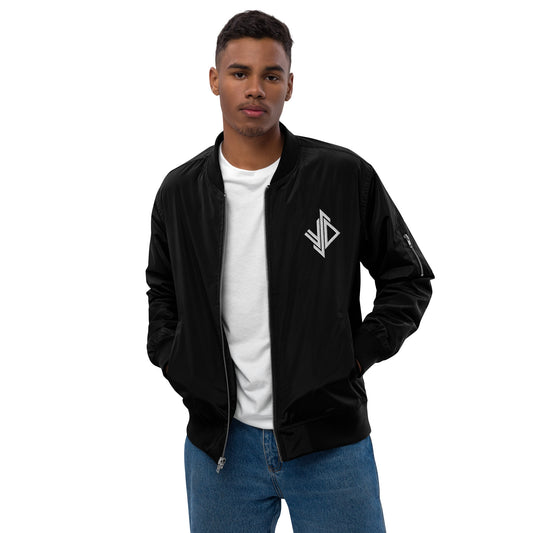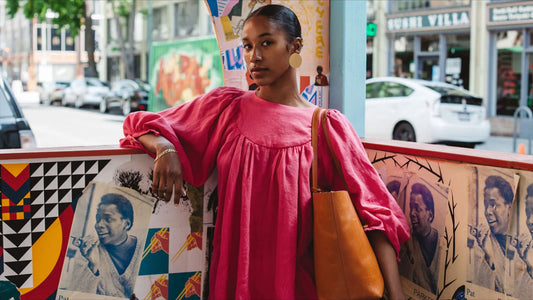
Reclaimed Trends: Street Style Meets Sustainable Fashion
In recent years, the fashion industry has undergone a seismic shift, with sustainability emerging as a central theme in design, production, and consumption. Among the most exciting developments is the rise of reclaimed trends in street fashion, where sustainability and style intersect to create a new paradigm of conscious cool. Streetwear, once synonymous with fast fashion and disposable trends, is now leading the charge in redefining what it means to be fashionable in an environmentally conscious world.
This blog post explores how street fashion is embracing reclaimed materials, upcycling, and sustainable practices to create innovative, stylish, and eco-friendly clothing. From thrifted vintage pieces to cutting-edge designs made from recycled fabrics, streetwear is proving that sustainability is not just a trend—it’s the future of fashion.
The Rise of Sustainable Streetwear

Streetwear has always been about self-expression, rebellion, and individuality. Born from the skate, hip-hop, and punk scenes, it has long been a voice for counterculture movements. Today, that voice is increasingly focused on environmental and social issues, as a new generation of designers and consumers demand more from their clothing.
The shift toward sustainable streetwear is driven by several factors:

1. Growing Awareness of Environmental Issues: Climate change, pollution, and resource depletion have pushed consumers to rethink their shopping habits. Streetwear enthusiasts, many of whom are young and socially conscious, are leading the charge in demanding more sustainable options.
2. The Influence of Thrifting and Vintage Culture: Thrifting has become a cornerstone of street fashion, with vintage pieces offering unique styles and a lower environmental impact. This trend has normalized the idea of wearing secondhand clothing, making it a badge of honor rather than a compromise.
3. Innovation in Materials and Design: Advances in textile technology have made it possible to create high-quality, stylish clothing from recycled and upcycled materials. Brands are experimenting with everything from reclaimed ocean plastic to deadstock fabrics, proving that sustainability and style can go hand in hand.
4. The Power of Social Media: Platforms like Instagram and TikTok have amplified the message of sustainable fashion, making it easier for brands and influencers to showcase their eco-friendly designs and inspire others to follow suit.
Reclaimed Materials: The Heart of Sustainable Streetwear

At the core of sustainable streetwear is the use of reclaimed materials. These materials, which might otherwise end up in landfills, are given a second life through innovative design and craftsmanship. Here are some of the most common types of reclaimed materials used in streetwear:
1. Recycled Fabrics: Many brands are turning to recycled cotton, polyester, and nylon to create new garments. These fabrics are often made from post-consumer waste, such as discarded clothing or plastic bottles, reducing the need for virgin materials.
2. Deadstock Fabric: Deadstock refers to surplus fabric that is left over from larger production runs. Instead of letting this fabric go to waste, brands are using it to create limited-edition pieces that are both sustainable and exclusive.
3. Upcycled Clothing: Upcycling involves transforming old or discarded garments into something new and stylish. This process not only reduces waste but also results in one-of-a-kind pieces that stand out in a sea of mass-produced fashion.
4. Reclaimed Accessories: From bags made out of repurposed seat belts to sneakers crafted from recycled rubber, accessories are a key area where reclaimed materials shine. These pieces often become statement items, showcasing the wearer’s commitment to sustainability.
The Role of Thrifting in Street Fashion

Thrifting has long been a staple of street fashion, but its popularity has surged in recent years as more people embrace sustainable shopping practices. Thrift stores, vintage shops, and online resale platforms like Depop and Poshmark have become go-to destinations for streetwear enthusiasts looking to score unique, eco-friendly finds.
Thrifting offers several benefits:
1. Reduced Environmental Impact: Buying secondhand clothing reduces the demand for new production, which in turn lowers the carbon footprint of your wardrobe.
2. Unique Style: Thrifted pieces are often one-of-a-kind, allowing you to create a look that is truly your own.
3. Affordability: Thrifting is typically more affordable than buying new, making it an accessible option for budget-conscious shoppers.
4. Supporting Local Economies: Many thrift stores are small, locally owned businesses, so your purchases can help support your community.
Brands Leading the Charge

A growing number of streetwear brands are prioritizing sustainability, proving that eco-friendly fashion can be just as stylish and desirable as its conventional counterparts. Here are a few brands that are making waves in the sustainable streetwear space:
1. Patagonia: Known for its commitment to environmental and social responsibility, Patagonia has long been a leader in sustainable fashion. The brand’s streetwear-inspired pieces are made from recycled materials and designed to last.
2. Stella McCartney: While not a traditional streetwear brand, Stella McCartney has collaborated with streetwear labels to create sustainable collections that blend high fashion with urban edge.
3. Noah: This New York-based brand combines classic streetwear aesthetics with a strong focus on sustainability. Noah uses organic cotton, recycled materials, and ethical production practices to create its stylish designs.
4. Pangaia: Pangaia is a sustainable lifestyle brand that offers streetwear-inspired pieces made from innovative materials like seaweed fiber and recycled cotton.
5. Reformation: While primarily known for its feminine designs, Reformation has ventured into streetwear with its Ref Jeans line, which uses sustainable denim and eco-friendly production methods.
How to Incorporate Reclaimed Trends Into Your Wardrobe

Embracing reclaimed trends doesn’t mean sacrificing your personal style. Here are some tips for incorporating sustainable streetwear into your wardrobe:
1. Start Small: If you’re new to sustainable fashion, start by adding a few thrifted or upcycled pieces to your wardrobe. A vintage graphic tee or a pair of secondhand sneakers can be a great way to dip your toes into the world of reclaimed fashion.
2. Mix and Match: Pair reclaimed pieces with items you already own to create fresh, unique outfits. For example, a thrifted denim jacket can add a cool, casual vibe to a simple jeans-and-tee combo.
3. Invest in Quality: When buying new, opt for high-quality pieces made from sustainable materials. These items may cost more upfront, but they’ll last longer and ultimately save you money in the long run.
4. Support Sustainable Brands: Do your research and support brands that prioritize sustainability. Look for certifications like Fair Trade, GOTS (Global Organic Textile Standard), and B Corp to ensure that your purchases align with your values.
5. Get Creative: Don’t be afraid to experiment with upcycling and DIY projects. Turn an old pair of jeans into shorts, or add patches and embroidery to a thrifted jacket to make it your own.
The Future of Sustainable Streetwear

As the fashion industry continues to grapple with its environmental impact, sustainable streetwear is poised to play a leading role in shaping its future. By embracing reclaimed materials, upcycling, and ethical production practices, streetwear brands are proving that sustainability and style can coexist.
The rise of sustainable streetwear also reflects a broader cultural shift toward conscious consumerism. As more people become aware of the environmental and social consequences of their choices, they are seeking out brands and products that align with their values.
Ultimately, reclaimed trends in street fashion are about more than just looking good—they’re about making a statement. By choosing sustainable clothing, we can express our individuality while also contributing to a healthier planet.
Conclusion
Reclaimed trends in street fashion represent a powerful fusion of style and sustainability. From thrifted vintage pieces to innovative designs made from recycled materials, sustainable streetwear is redefining what it means to be fashionable in the 21st century.
As consumers, we have the power to drive change by supporting brands that prioritize sustainability and making conscious choices about what we wear. By embracing reclaimed trends, we can create a wardrobe that not only looks good but also does good.
The future of fashion is here, and it’s sustainable, stylish, and street-smart. Are you ready to join the movement?








